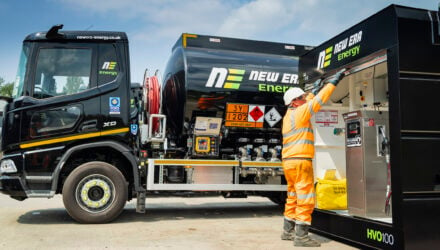On Wednesday 10th April 2024, the European Parliament adopted new measures, already agreed upon with the Council, to strengthen CO2 emission reduction targets for new heavy-duty vehicles (HDVs).
The regulation, addressing emissions from new trucks, buses and trailers, was endorsed by MEPs with 341 votes in favour, 268 against and 14 abstentions.
CO2 emissions from large trucks (including vocational vehicles, such as garbage trucks, tippers or concrete mixers) and buses will have to be reduced by 45% for the period 2030-2034, 65% for 2035-2039 and 90% as of 2040. By 2030, new urban buses will need to reduce their emissions by 90% and become zero-emission vehicles by 2035. Emissions reduction targets are also set for trailers (7.5%) and semi-trailers (10%), starting from 2030.
The law requires the Commission to conduct a detailed review of the effectiveness and impact of the new rules by 2027. This review will need to assess, among others, whether to apply the rules to small lorries, the role of a methodology for registering HDVs exclusively running on CO2 neutral fuels and the role that a carbon correction factor could have in the transition towards zero-emission HDVs.
Rapporteur Bas Eickhout (Greens/EFA, NL) said: “The transition towards zero-emission trucks and buses is not only key to meeting our climate targets, but also a crucial driver for cleaner air in our cities. We are providing clarity for one of the major manufacturing industries in Europe and a strong incentive to invest in electrification and hydrogen.”
Next steps
The Council still needs to formally approve the agreement before it can enter into force.
Background
Heavy-duty vehicles are responsible for more than 25% of greenhouse gas (GHG) emissions from road transport in the EU and account for over 6% of total EU GHG emissions. According to the Commission’s legislative proposal tabled in February 2023, reducing these emissions is crucial to the EU’s objectives of achieving climate neutrality by 2050 and lowering demand for imported fossil fuels.
Fedor Unterlohner, freight manager at T&E, said: “The EU is clearly telling truckmakers when almost all their vehicles will need to be zero emissions.
“European producers now have a clear trajectory to ramp up production of electric and hydrogen rigs and be ready for the challenge of Tesla and Chinese rivals.”
He added: “No stakeholder got everything they wanted, but the truth is this is a very balanced deal and positive news.
“One of Europe’s biggest polluters has a path to go green. Long-term investment certainty has been given to manufacturers and the freight industry. Now let’s start implementing.”
Director of transport at the Climate Group, Sandra Roling, welcomed the CO2 emission reduction targets for trucks. “It is especially welcome to see that calls to include loopholes for e-fuels – which in effect would prolong the life of the combustion engine and divert funds from zero emission technologies – were resisted,” she said.
“This new regulation will stimulate the market for truly zero emission solutions like electric trucks, and make it easier for companies like those in our EV100+ initiative to procure zero emission trucks for their fleets.”
Todd Anderson, VP and Chief Technology Officer, PHINIA: “By passing the law enforcing a 90% reduction in the sales of new CO2-emitting heavy-duty (HD) vehicles from 2040, the EU has set a timer on the development and implementation of alternative fuels and increased expectations on vehicle manufacturers to improve efficiency and reduce emissions. To adequately support this move toward HD vehicle carbon reduction, a Battery Electric Vehicle (BEV) approach is challenging due to HD rigorous application demands and continuous operating conditions. Rather, a liquified or gaseous high-density fuel offers promising solutions to move toward decarbonizing this vehicle segment. The industry needs short-term solutions to reduce emissions from internal combustion engines (ICE) coupled with long term objectives to utilize low and no-emission fuels.
“At PHINIA, we see hydrogen internal combustion engines (H2ICE) as a strong and viable option to move toward CO2 reduction rapidly. This solution leverages existing industry equipment, assets, production workforce, technicians and even service networks to begin to make a difference in decarbonization now. Having said that, the infrastructure to support a sustainable hydrogen mobility solution still needs extensive development.
“While many are working in a diligent and focused way to increase renewable hydrogen infrastructure capability, we continue to explore other carbon-reducing solutions to ensure ongoing progress towards sustainability goals. Using our extensive fuel system technology expertise to increase the efficiency and longevity of existing ICE engines, PHINIA supports the industry by contributing to reduced carbon emissions while ensuring operational continuity in this transition to alternative fuels.”
Members of the Climate Group’s global initiative EV100 have committed to adopting 5.5 million electric vehicles (EVs) by 2030.








